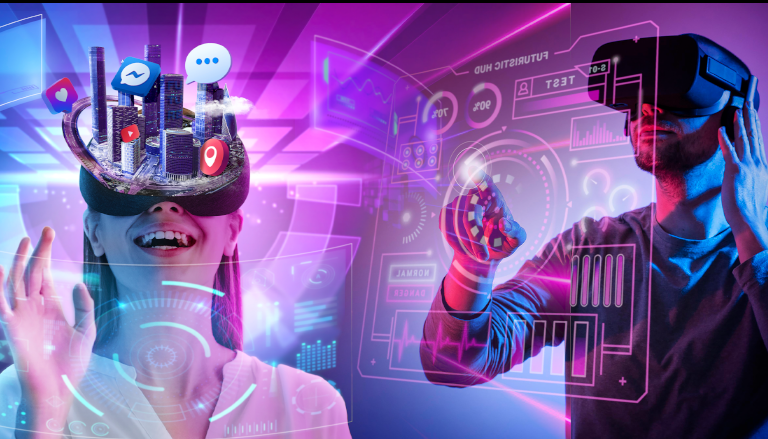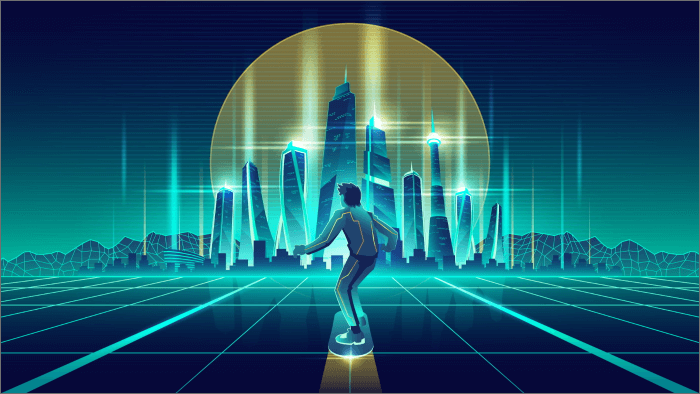1. Introduction: Entering a New Dimension
The term “Metaverse” has rapidly shifted from science-fiction jargon to a mainstream concept shaping business strategies, cultural narratives, and policy debates.
Defined broadly as a persistent, immersive, and interconnected digital universe where people can work, play, socialize, and trade, the Metaverse represents not merely a technological innovation but also a paradigm shift in human interaction.
The rise of high-speed connectivity, advanced graphics engines, virtual and augmented reality (VR/AR), and blockchain-based digital ownership is converging to make the Metaverse technologically feasible and economically attractive.
2. Origins and Conceptual Evolution
2.1 Science Fiction Roots
The word “Metaverse” was first coined by Neal Stephenson in his 1992 novel Snow Crash, depicting a shared 3D virtual space where avatars interact in real time.
Later works such as Ready Player One and The Matrix popularized visions of fully immersive virtual worlds, reflecting both the aspiration and anxiety around digital realities.
2.2 From Virtual Worlds to Immersive Platforms
Early experiments, such as Second Life (2003), hinted at what a user-driven digital society could look like.
However, the technological limits of broadband, graphics, and user engagement at the time prevented it from becoming a mainstream environment.
Today’s Metaverse is powered by:
- Cloud Computing for scalable processing.
- VR/AR Devices enabling sensory immersion.
- Blockchain and NFTs enabling decentralized ownership.
- AI and Generative Content for adaptive environments and lifelike virtual agents.
2.3 The Shift from Web2 to Web3
Unlike the static pages of Web1 or the social-media-dominated Web2, the Metaverse aligns with Web3’s vision of decentralized, user-owned platforms.
It represents the next stage of spatial internet, where interaction moves from flat screens to persistent 3D spaces.
3. The Core Pillars of the Metaverse
3.1 Immersive Presence
Presence refers to the psychological sense of “being there” in a digital environment.
Advances in:
- Haptic Interfaces
- Eye-tracking and Motion Capture
- High-fidelity 3D rendering
…are enhancing immersion, making virtual environments feel increasingly natural.
3.2 Interoperability
A true Metaverse requires seamless interaction across platforms—allowing assets, avatars, and identities to move between virtual spaces just like people travel between countries.
Standardization efforts (e.g., by the Metaverse Standards Forum) aim to avoid fragmentation, but commercial rivalries remain a major hurdle.
3.3 Digital Economy
The Metaverse is powered by its own economy:
- Virtual Goods and Services: Skins, digital real estate, VR concerts.
- Decentralized Finance (DeFi): Token-based transactions and staking.
- Creator Economy: Individuals can design, sell, and profit from their digital creations.
In 2022 alone, virtual goods in gaming platforms generated over $60 billion, signaling enormous economic potential.
3.4 Social Interaction
The Metaverse enables:
- Remote Collaboration: Teams working in virtual offices.
- Education and Training: Immersive simulations for medicine, engineering, and military training.
- Social and Cultural Exchange: Concerts, festivals, and cross-border community building.
The fusion of real-world and virtual identities is reshaping social norms and communication dynamics.
4. Current Applications Across Sectors
4.1 Business and Workplaces
Tech giants like Meta, Microsoft, NVIDIA, and startups are building enterprise Metaverse platforms where:
- Employees collaborate in shared virtual workspaces.
- Companies conduct immersive product launches and trade shows.
- Supply-chain simulations improve efficiency and reduce risks.
4.2 Healthcare
The Metaverse is transforming healthcare through:
- Virtual Surgery Training with precise simulations.
- Telepresence for Remote Care, enabling doctors to interact with patients in immersive settings.
- Mental Health Therapies using controlled VR environments.
4.3 Education
Universities and schools deploy immersive classrooms, allowing:
- Historical reconstructions for history lessons.
- Virtual science laboratories.
- Collaborative problem-solving across continents.
4.4 Entertainment and Culture
Gaming remains a driving force, but we now see:
- VR Concerts and Theater Performances (e.g., Travis Scott’s Fortnite concert reached 12 million viewers).
- Digital Fashion and Museums offering interactive cultural experiences.
4.5 Urban Planning and Smart Cities
Cities are building “digital twins”—virtual replicas of physical infrastructure—to plan transportation systems, predict environmental impacts, and engage citizens in urban design.

5. Challenges and Risks
5.1 Privacy and Data Security
Immersive devices collect sensitive biometric data such as eye movements, gestures, and emotional responses.
Without strict regulations, these could be misused for surveillance or manipulation.
5.2 Mental Health and Social Well-being
Excessive immersion risks:
- Addiction and Escapism.
- Identity Confusion between avatars and real-world personas.
- Social Isolation, especially for younger users.
Research into psychological impacts is still in its early stages.
5.3 Economic Inequality
The Metaverse could exacerbate digital divides:
- Expensive VR equipment may exclude lower-income groups.
- High-bandwidth connectivity is still unavailable in many regions.
- Wealth disparities could be mirrored or amplified in virtual economies.
5.4 Governance and Legal Frameworks
Key questions remain:
- Who owns virtual land or intellectual property?
- How to regulate decentralized platforms operating across jurisdictions?
- How to address crimes like fraud, harassment, or virtual property theft?
Global coordination is limited, making governance a critical bottleneck.
5.5 Environmental Concerns
Blockchain-based Metaverse platforms can consume significant energy.
The shift to green computing and efficient consensus algorithms is essential to align with sustainability goals.
6. Case Studies
6.1 Decentraland and Virtual Real Estate
In 2021, a plot of virtual land in Decentraland sold for $2.4 million, sparking debates over digital property value.
While prices later cooled, the phenomenon highlights the speculative yet transformative nature of digital asset markets.
6.2 Meta’s Horizon Worlds
Meta invested billions to build a consumer-oriented Metaverse platform.
Despite slow adoption and criticism, it accelerated industry-wide innovation in VR hardware and collaboration tools.
6.3 South Korea’s National Metaverse Initiative
South Korea launched a government-backed Metaverse ecosystem for education, tourism, and business, demonstrating how nations may leverage immersive technology for strategic competitiveness.
7. Ethical and Philosophical Dimensions
The Metaverse challenges long-standing notions of:
- Identity: Avatars may express or obscure gender, ethnicity, and appearance.
- Reality: Blurred lines between virtual and physical worlds prompt questions about authenticity and trust.
- Human Agency: As AI-driven avatars proliferate, distinguishing between human and machine interactions becomes more complex.
These issues suggest the need for ethical frameworks parallel to technical standards.
8. The Future Outlook
8.1 Convergence of Technologies
Future Metaverse experiences will likely integrate:
- Brain-Computer Interfaces (BCI) for direct neural input.
- 5G/6G Networks for ultra-low latency connectivity.
- Generative AI for dynamically created worlds and characters.
8.2 Hybrid Reality and the “Phygital” World
Rather than replacing the physical world, the Metaverse is expected to merge with it—creating phygital experiences (physical + digital), where virtual elements enhance real-world activities.
8.3 Decentralized and User-Owned Ecosystems
A mature Metaverse may be governed by decentralized autonomous organizations (DAOs), reducing reliance on corporate gatekeepers and allowing users to co-create rules and value distribution.
8.4 Toward a Sustainable Metaverse
Adoption of green energy solutions, efficient computing, and inclusive design will be essential to ensure that the Metaverse contributes to, rather than undermines, global development goals.
9. Conclusion: Navigating a New Reality
The Metaverse embodies both the promise of enhanced human creativity and the peril of unregulated transformation.
It has the potential to democratize access to opportunities, reinvent education and healthcare, and catalyze new forms of cultural expression.
However, without deliberate attention to privacy, ethics, governance, and equity, the Metaverse could deepen divides and create unforeseen risks.
Ultimately, the future of the Metaverse will be defined not merely by technological progress but by how societies choose to integrate, regulate, and humanize it.
















































